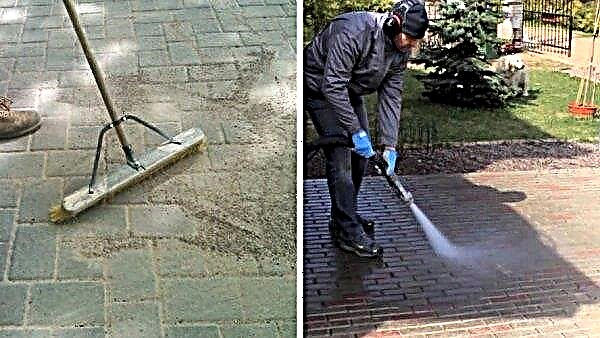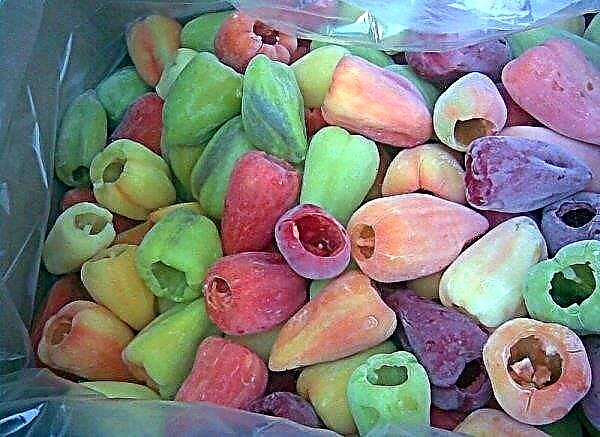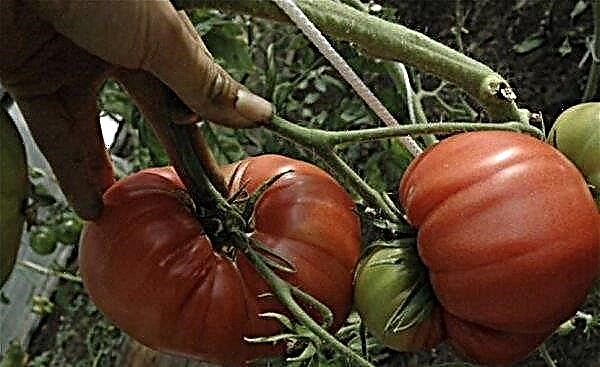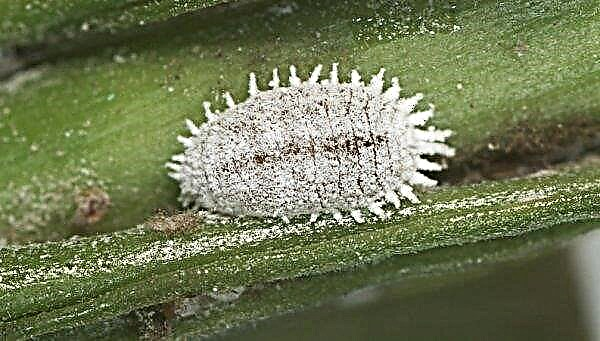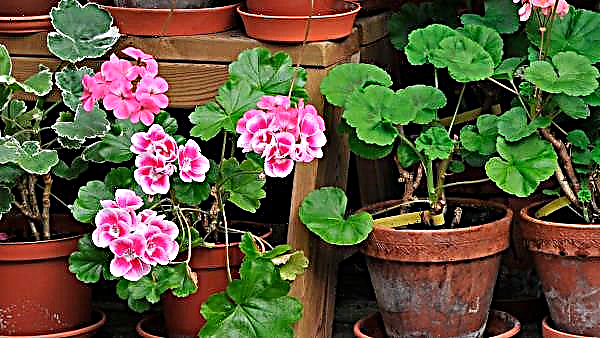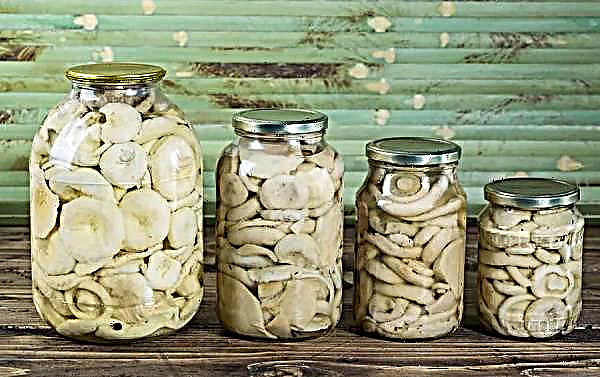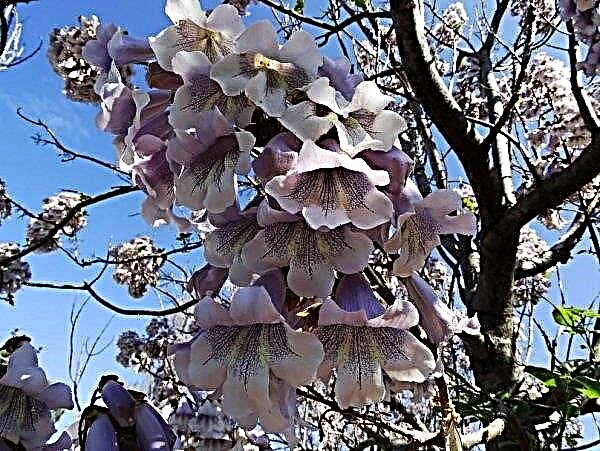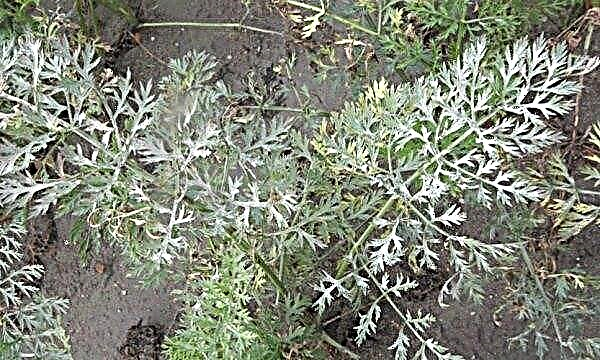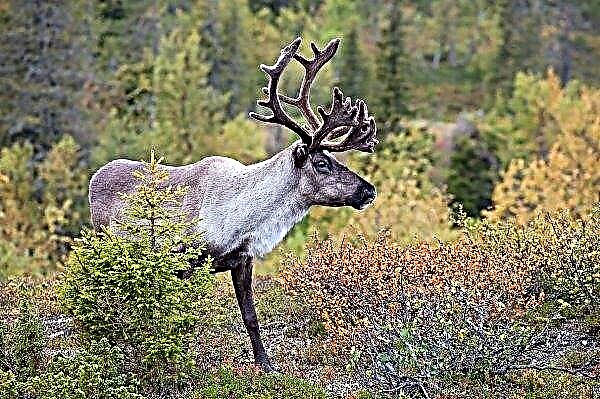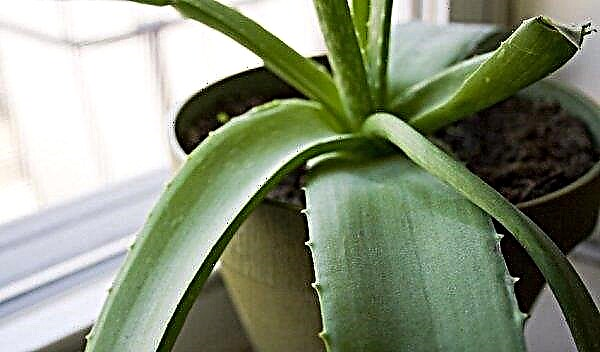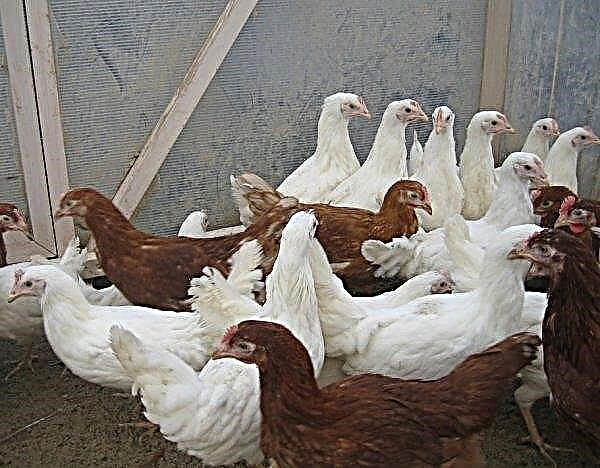Each gardener wants his plot to look beautiful not only in the warm period, but also in winter frosts. One of the plants satisfying this requirement is Juniper Blue Forest, which is distinguished by good decorativeness regardless of the season. On the intricacies of planting and caring for shrubs - see below in detail.
Botanical Description
Juniper Blue Forest is a variety of creeping horizontal shrub.
This coniferous perennial plant has the following characteristics:
- reaches a height of up to 0.2–0.4 m. Annual growth - not more than 8–10 cm;
- the crown is dense, in diameter it can reach up to 1.5–2 m;
- branches are abundant in density, flexible and short. Lateral shoots are lifted vertically upwards and form a fluffy and dense coniferous carpet;
- small needles (up to 5 mm), silver-blue color and scaly structure. In winter, the color of the needles acquires a purple hue;
- cone berries are spherical and blue-black in color. Their diameter is about 5-6 mm.

Landing
When choosing a place of growth of juniper, you need to take into account certain subtleties:
- landing is made in late April - early May, before the onset of heat;
- open and sufficiently lit areas are preferred (partial shade is allowed). Lack of lighting affects the growth and color of needles (turns green);
- grows on poor sandy and rocky soils, but poorly develops on too acidic, waterlogged, dense and clay soils. Drainage is also needed;
- the distance between the seedlings is at least 2 m, as the plant grows in breadth.
Important! The root of the bush is very brittle, for this reason it is recommended to plant it together with an earthen lump.
The landing algorithm is not difficult and consists of several successive steps:
- Dig a recess up to 70 cm deep and 1.5 times wider than an earthen lump with roots.
- At the bottom, place a drainage layer (up to 15 cm) of expanded clay, vermiculite, gravel crumbs or small gravel.
- Sprinkle a little with the prepared substrate (options for suitable formulations are slightly lower in the text).
- Place the roots of the seedling in the hole and sprinkle with a soil mixture until completely filled. Compact the soil. Care should also be taken not to cover the neck of the soil with earth.
- Pour up to 10-15 liters of water for each instance. Radifarm biostimulant or Kornevin root can be added to water (according to the instructions) to accelerate root growth and quickly adapt the plant.
- Cover the trunk circle with a mulching layer of bark, wood chips, dry foliage or colored gravel.

Variants of soil mixtures for planting juniper:
- Equal proportions of humus, peat, sand and land from the site. You can mix a little gravel or vermiculite.
- Purchased substrate for conifers and soil from the site (1: 1).
- Sand, peat and turf land (1: 2: 1).
Important! When planting, you need to focus on the height of the seedling, the depth of the planting pit, which should exceed it 2 times, depends on this.
Juniper Care
Blue Forest, like all junipers, is undemanding, and caring for it is quite simple and consists in simple manipulations:
- monthly watering in the amount of 15–20 l of water for each plant. Juniper also responds well to a water shower, which is carried out in the morning or in the evening. Young seedlings at first need to be watered every 10-12 days;
- 2 times a season (April and August) you can apply liquid humic fertilizer PETER PEAT “Living power: for coniferous crops”, or “Kemira Universal” (20 g per 10 liters of water), or other dressing for conifers. However, if the plant is already growing and looking normal, then top dressing may not be used;
- sanitize to remove dry and broken branches. Forming haircut is carried out at will, since the bush has a decorative appearance;
- Before winter, the branches must be dragged, and later from time to time to shake off the accumulated snow to prevent breaking branches. Young specimens should be covered with spruce branches. Mulch the trunk circle with peat or sawdust (8-10 cm);
- remove winter mulch, loosen the ground to a depth of 5 cm and cover with a new mulching layer;
- when weeds appear, they should be removed immediately. Mulch can relieve the appearance of this problem. It also protects the roots from summer overheating and moisture evaporation.
Video: Juniper Care
Possible diseases and pests
In the event of adverse conditions, juniper can be affected by some diseases and pests:
- the formation of orange growths on the shoots, as well as a change in the color of the needles to a dirty orange color with subsequent drying, indicates the appearance of a fungal disease called rust. Affected branches need to be removed and burned, and the plant treated with fungicides (for example, “Skor”, “Bayleton” or “Vectra”);

- another fungal disease - shute, occurs in early summer and is manifested by yellowing of the needles and the appearance of black dots on it. Affected branches need to be burned and sprayed with shrubs with the preparations "Ridomil Gold", "Strobi" or "Quadrice" according to the instructions;

- excess moisture may occur fusarium. The needles dry out and crumble. At the first signs of the disease, the soil under the bushes should be treated with Alirin-B, Fitosporin-M, Gamair. For prevention, a 0.2% solution of Fundazole is used;

- young specimens with tender needles are often amazed aphids. To prevent its spread, it is necessary to timely combat ants, aphids. Trees should be sprayed according to the instructions Fufanon, Aktara, Aktellik or Decis;

- round brown plaques cover branches upon infection scale. They contribute to the curvature of shoots and the death of the bark. In this case, insecticidal drugs are used (Fitoverm, Actellik or Aktara).
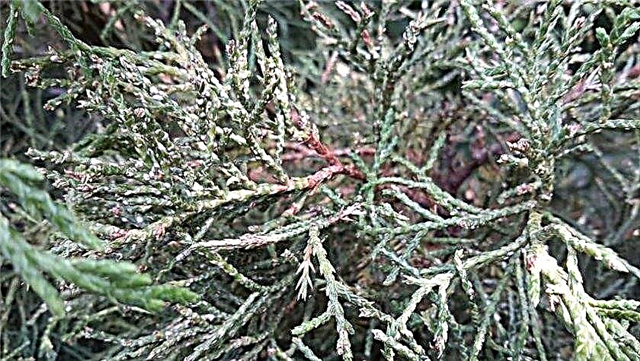
Breeding methods
There are several ways to reproduce juniper:
Use in landscape design
Juniper Blue Forest due to its unpretentiousness, frost resistance and decorativeness is very widely used both in the design of private sites and flower beds, and in urban recreation areas. The shrub not only goes well with many plants (for example, barberry, coniferous or heather), but is also suitable for any style, whether classic or modern.
Did you know? Juniper high has very strong wood. From it, floors were built in the basements of the Genoese fortress (Sudak). For 700 years, wood has retained its strength and holds a three-story building.
- It is applicable for a number of options:
- how the ground cover is used on slopes, hills or in rockeries;
- in the lower tiers of rock gardens;
- to fill empty badlands;
- to strengthen inclined surfaces;
- at registration of borders;
- in order to strengthen the coastal zone of water bodies;
- to smooth out irregularities and create a green cover on rocky areas;
- for division into functional zones.
Video: Juniper horizontal Blue Forest
The combination of the purple color of barberry and hehera, as well as white clusters of spirea and cinquefoil flowers, will accentuate the blue needles of juniper. You can create any composition and experiment with a combination of plants, but Blue Forest always pleases the eye with its shapes and unusual colors of needles.
Did you know? Juniper thickets grow near coal seams. So a coal basin was discovered in the suburbs.
According to many owners of this plant, they are all delighted with juniper. This unpretentious representative of the flora does not leave anyone indifferent.






